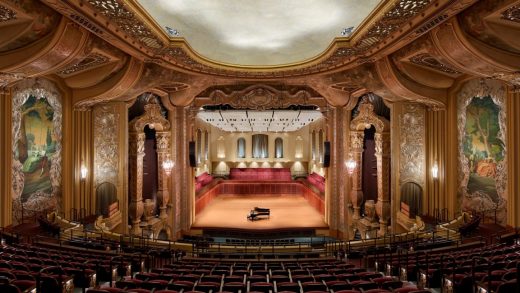How a lavish 1930s theater was reborn as an acoustical paradise
The perfect acoustics aren’t always visible to the naked eye.
Once a lavish cinema owned by Warner Brothers studio, the Warner Grand Theater in Milwaukee has been transformed into an acoustic paradise for the Milwaukee Symphony Orchestra. The four-year-long renovation involved moving a 625-ton, 85-foot-tall wall into the street to make room for a larger stage, and introducing a slew of hidden acoustical features to make the space sound as good as it looks. The revived building, complete with a 1,750-seat hall, reopened with an inaugural performance in the fall of 2021, proving once again that old buildings can be fine-tuned for the 21st century.
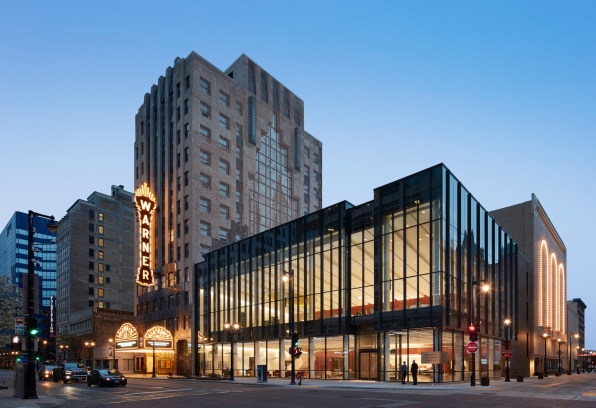
The Warner Grand Theater was built in the 1930s as part of half a dozen other cinemas in downtown Milwaukee that provided escapism from the Great Depression. The cinema eventually closed in 1995 and sat vacant until the Milwaukee Symphony Orchestra purchased the building in 2017. The journey to acoustical perfection, however, began back in 2000, when the orchestra first considered the building as a new home. In the process, they removed the first seven rows of seats in order to build a temporary platform and test the sound quality. The soundcheck proved successful, but the plan to move forward was thwarted by the ensuing housing market bubble.
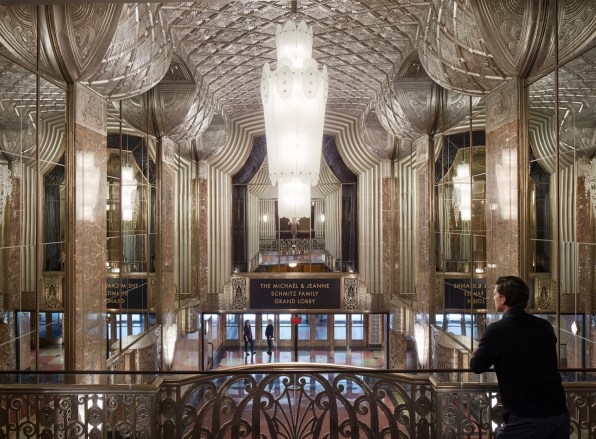
The renovated building was designed by local architecture firm Kahler Slater, which preserved the original L-shaped building—including the glittering Art Deco lobby and ornamental plasterwork. They then supplemented it with two extensions flanking the performance hall, including a glassy welcome pavilion with a central staircase that was inspired by the shape of a harp, and crowned by a skylight. “Breathing new life into a building like this is so rewarding on many levels,” says Chris Ludwig, an associate principal at Kahler Slater. “[The orchestra] took a historic building, and saved it from an otherwise unknowing future.”

The Warner Grand Theater building was originally designed for film screenings, not live performances, so the depth of the stage had to be expanded from 18 feet to 53 feet. But instead of carving out space from the seating—which would have interfered with sight lines and reduced seating capacity—the architects extended the stage by moving the theater’s rear terracotta wall 35 feet into the street. The move, which occurred over the course of six hours, helped preserve the historic fabric of the east facade, and earned the building $18 million in state and federal historic tax credits. (In fact, the Milwaukee Symphony Orchestra just won the 2021 Historic Restoration Award from the Wisconsin Historical Society.)
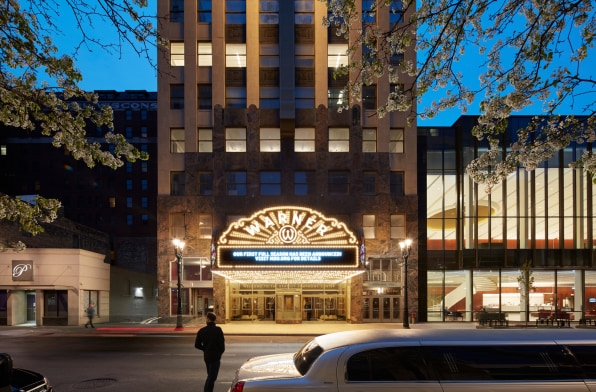
Changing the size of the stage, however, had an impact on the acoustics within. So the architects worked with acoustical firm Akustiks on architectural elements to enhance the acoustics. On the stage level, curtains can be rolled out inside a hollow wall to mitigate the sound. Above the stage, a series of elegant, latticed wood screens appear to be decorative but they’re in fact hiding huge doors that can swing open or closed to control the amount of sound created on the stage.
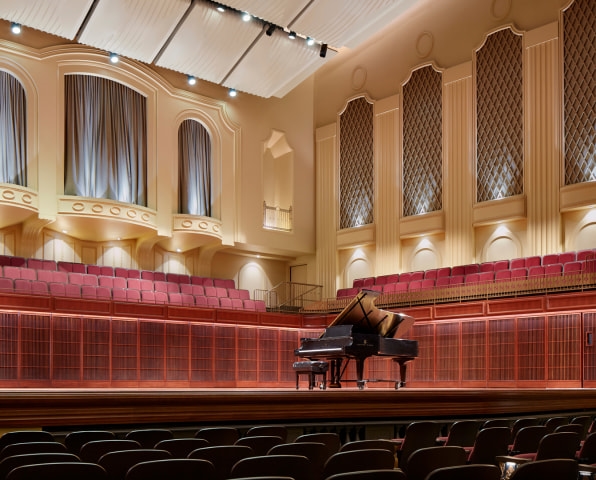
Fittingly, the scale of the hall, and its myriad of ornamental features, contributed to the sound quality of the space, as well. “The variegated surface of the ornate plaster breaks up the sound and makes it a much richer experience,” says Ludwig. In some of the historic arches, the team even installed blinds that can drop down and fill the arches to temper the “brightness” of the sound when needed.
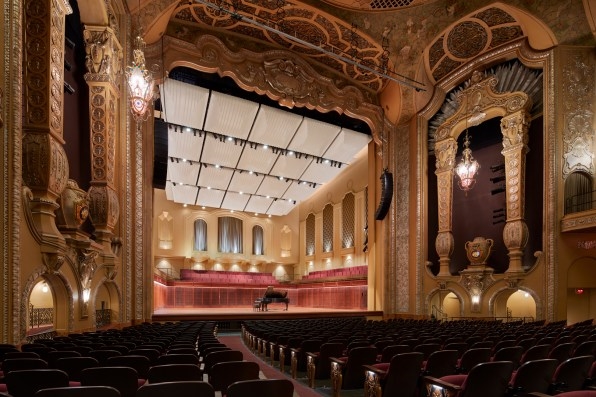
And where the new wings meet the historic structure, the architects ensured that the two buildings don’t actually touch so that sound doesn’t travel between the two. “When listening to a performance, you want the hall to be dead quiet,” says Ludwig. For example, mechanical systems were hung on springs and soft joints were used to connect the historic construction to its northern and southern expansions. “A lot of attention was placed on separating the hall from everything else,” says Ludwig.
(39)

